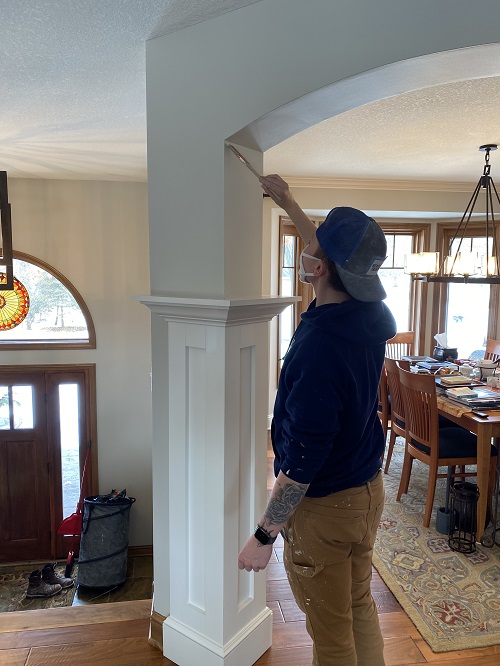Q1: How do you check your work at the end of a project?

Zachary Ausherman, Ausherman Painting, Mechanicsburg, PA
Our proposals are very descriptive, so the crews know what to do where. We ask our customers to do a walk-through the night before our last day to make sure our work meets their expectations. Then we’ll ask them to walk around with the crew leader before the crew leaves on the last day to check again.
I know a lot of contractors have the customers sign off, but we don’t do that. I want our customers to know that if they see something in a week or so, we have no issue coming back to tweak it for them.
Eric Beaugh, Celeritous Services, Opelousas, LA
A day or two before walk-through, we mark all touch-up spots with tape. It kills two birds with one stone; the client realizes we are aware of the spots and doesn’t bother us, and sometimes they will grab a roll of tape once we have left and mark spots, which again doesn’t interfere with our schedule. On really high-end jobs, I require each member of my crew to do a final walk-through and sign off on completion. It holds everyone responsible for anything missed—and no one wants to be the painter who didn’t do their job.
With experience, you start to know where to look—for instance, the bottom side of the lower stringer of a fence. A newer painter won’t realize they missed that even though they ran some paint down there, but if you get down at ground level and look, you will see it.
Rob Grant, Rob’s Painting and More, Moncton, NB
I usually have four painters on a crew, and when the project is complete, I switch them to areas that they were not painting to do a deficiency list. The list is then passed to the person who did the area. It’s also a good way to see how well each person pays attention to detail. In an average-sized room, if it takes more than 15 minutes to address issues, they do not get paid for it. In a 12' × 12' room, it should not take more than 15 minutes to address issues.
When I go into a job, I document all issues from existing paint—we do not want to be held accountable for something someone else did. We take pictures and show the client prior to starting.
Stacey Spear, S&S Painting, Mechanicsville, VA
Throughout the job, the foreman has a checklist of what needs to be painted in each space. When the room is “complete,” our foreman and/or project manager goes around the painted rooms with a roll of blue tape. They mark anything they see that needs to be taken care of; then the painters fix it. Once that is completed, the room is then COMPLETE. We have found inspecting a room with tape instead of with paint in our hands helps us be more accurate with the inspection.
Ryan Turry, Headwaters Painting, Minneapolis, MN
- We have a “post-project checklist” for the team to go through.
- We walk the room or area in both directions.
- The lead painter does a final walkthrough to spot any last items.
- We do a final walk-through with the client.
I stress that the crew put themselves in the client’s shoes and take their time looking for things that would stand out.
Add new comment